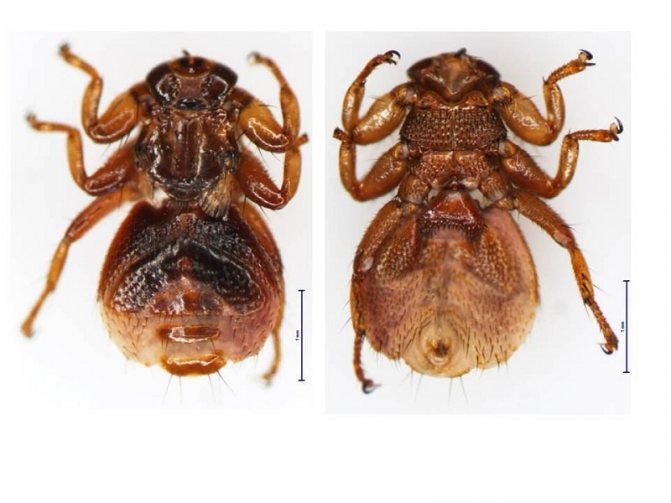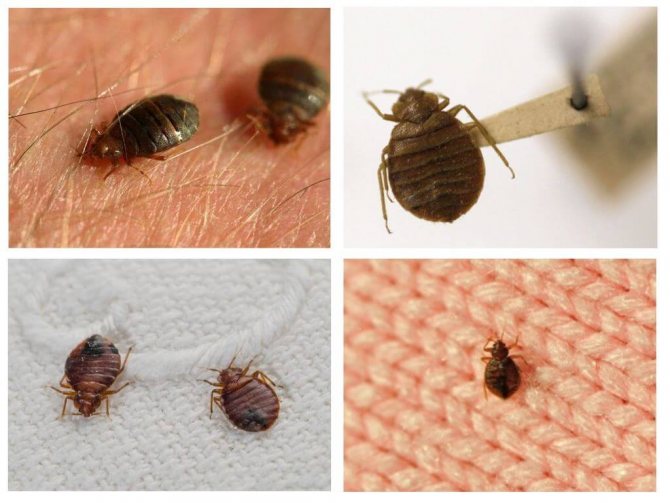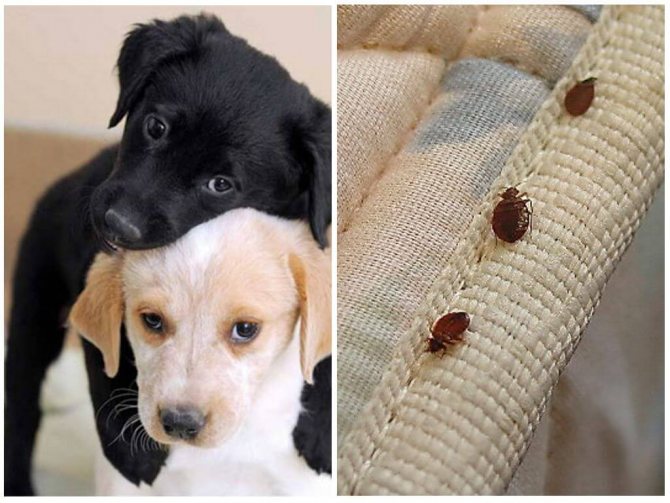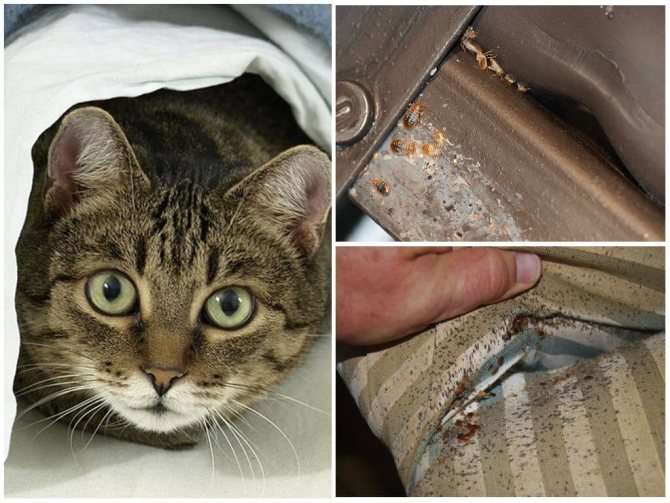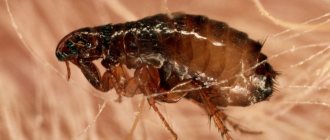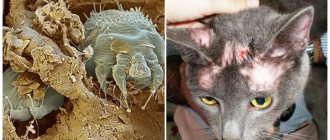Our pets are faithful companions and best friends for many years. They peacefully wait for their owners from work, sincerely rejoice in the company of a loved one and happily share winter evenings with him. But what to do when bedbugs are in the house? Will a devoted dog or fluffy cat, just like a person, suffer from the regular attacks of these parasites? We hasten to please you with relatively good news: bed bugs only recognize humans as their main source of food. In this case, practically nothing threatens pets. At the very least, no one will bite and wake them up in the middle of the night with an unpleasant itch. And only in the most difficult times for parasites, four-legged friends can suffer from their attack. For example, the owner of the apartment will go on vacation for two weeks, and Sharik will remain to guard her.
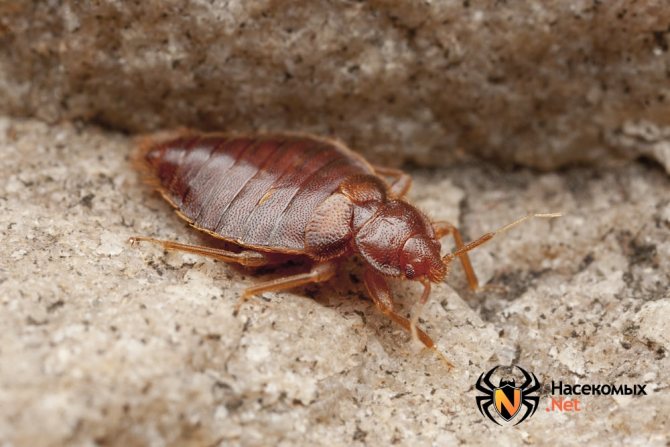
However, in general, this is an unnatural behavior of insects. Their long and sharp proboscis can easily pierce the thin and soft skin of a person, but relative to animals, this process is several times more complicated. The larvae do not manage to reach the blood vessel at all, so they have only one thing to do - to starve and wait for a more acceptable source to appear. In addition, our smaller brothers can see perfectly in the dark, which allows you to immediately notice the enemy offensive, and the smell of their fur never attracts even the most hungry individuals. The only exception can be Sphynx cats, which do not have a thick undercoat, and the skin is slightly softer than other species. And which of the pets certainly suffers from mass invasions of bedbugs, it is birds (including domestic chickens). Their skin has all the necessary properties: as soft and thin as a human. The vessels under it are located close enough, and the entire family of parasites has enough bare areas of the body without feathers. It is noteworthy that bugs reproduce in the chicken coop more than actively, every day conquering an increasing part of its territories (cracks and gaps in the walls, hay, nests, floor, between bird cages, etc.).
Bedbugs cannot stay in the fur of dogs and cats for a long time
The fact is that bed bugs belong to the group of so-called periodic parasites. They do not live on the body or in the hair of animals or people. They don't live on cats or dogs, they don't live on humans.


Neither dogs nor cats tolerate bed bugs
They spend most, the main part of their lives outside the body of a person or, for example, a dog, and in their shelters - behind furniture, in cracks in walls, under stones in caves, behind baseboards, at the joints of bed frames or sofas. Here they reproduce, digest food, and only briefly get out of such shelters to saturate, sneak up on their prey, very quickly (as quickly as they can do it) bite, suck blood, and then leave their shelters again.
This means that the bugs do not live on the body of their victim and do not move anywhere with their owner. These bugs in their biology are very different from fleas, which live for a long time in the fur of animals, and representatives of some species of fleas never leave the host's body at all.
This is especially well manifested in fleas that parasitize large ungulates - if a flea jumps from such an animal, it risks never finding its owner and dying, since in the wild ungulates often make long migrations to the place where the flea jumped from the host , they may not return, and a flea is not capable of catching up, say, a ram or an antelope.
For bedbugs, this danger is not relevant. They live near places where people or other animals are constantly, and therefore they can always get close to the victim at a certain time and drink blood.
That is, even where bugs are forced to bite cats or dogs (which, in fact, happens extremely rarely), they never settle in the animal's fur. This means that the animal itself, moving, for example, from the street or from the basement to the house, will not bring bedbugs anywhere.
This is the main reason. But there are other facts that indicate that cats or dogs cannot carry bed bugs.
Who else is interested in bedbugs?
Before the bugs became "house" insects, they lived in nature and parasitized on small rodents. The location was the burrows of gophers, mice, and other insectivorous rodents.


But the most "tasty" for bedbugs are bats. They settle in a colony and have many areas of skin uncovered by wool. In addition, the caves of flying bats have optimal temperature conditions. Here, bedbugs are more comfortable than in a rodent's mink. This is the perfect place to live! Here you have a lot of food, and the temperature is pleasant and you will hardly meet enemies.
Bedbugs do not bite animals that do not sleep
Bed bugs mostly bite sleeping victims. If an animal or a person begins to move, and even more so wakes up, the bugs immediately run away from his body to shelter.


Bedbug sucks blood from a sleeping bat
Exceptions are possible only if the bugs have been starving for a very long time. At the same time, they are quite fast insects and while a sleepy person or a sleepy cat is stretching, as if they have time to fall to the floor and hide. That is, the likelihood that a cat or dog slept in the basement, then woke up, came home and brought bedbugs - is minimal. Even if bugs bit her there, they all stayed there in the basement.
Are bites dangerous?
A bed bug can tolerate very formidable diseases - anthrax, tuberculosis, typhoid, hepatitis and other equally serious ailments. However, infection in this case occurs very rarely - like any parasite, the bug tries to keep its victims healthy, therefore it does not infect them with dangerous diseases. And although scientists have indeed proven that a bite can cause the transmission of a number of viruses and bacteria, such cases are more typical in laboratory conditions.
However, this does not mean that you can relax - bedbug bites can cause severe allergies not only in humans, but also in cats. Usually pedigree cats suffer, which are often characterized by weakened immunity and a tendency to allergic reactions.


Bedbugs generally rarely bite animals.
The main owner of bedbugs is a person. Therefore, they settle almost exclusively in houses and apartments, and therefore there are very few of them in the wild, and those that exist live near colonies of bats, but not on wild cats and dogs. Therefore, wherever bugs live, they are looking for a person, and if a person disappears from there (for example, leaves an infected house), they look for other rooms in which people live.
Eating bedbugs on cats and dogs is a rarity. Only if in some apartment people leave for several weeks or months and leave an animal here, which the neighbors feed during the day, bugs can bite this animal for some time. But most of them will begin to creep into neighboring premises in search of people.
For this reason, almost nowhere in those places where bedbugs live, they do not attack dogs and cats. They live where people live and have the ability to bite people. They don't need to bite cats or dogs. Moreover, in the fur of animals it is very difficult for them to get close to the skin because of their wide flat bodies.
Bedbug Breeding Tips


Bed bug control methods
When traces of the presence of bedbugs are obvious, the person should immediately take measures to combat the parasites:
- Fight using folk methods. Safe for animals, but low disposal efficiency.
- The use of chemicals is a rational option that requires special care.
- Calling special services to destroy bedbugs.
Fighting parasites with folk remedies is quite safe for a person and his pets, so no additional measures will have to be taken.
Insecticide applications to get rid of bedbugs if there is a cat, dog or other pet in the house should be done according to the following rules:
- At the time of processing, it is imperative to remove the pet from the room.
- Carefully process the sleeping place of the animal.
- To touch all the places where the animal prefers to spend time: rugs, boxes, baskets.
A pet does not go where there can be a lot of bedbugs
If a cat or dog lives in your house, then she is unlikely to often and for a long time in other apartments or houses. She can run on the street for a long time, but bed bugs do not live on the street, and here she will not pick them up. She can climb into basements, but bed bugs do not live in basements, and here she will most likely pick up fleas, but definitely not bed bugs. Therefore, she simply has nowhere to bring bedbugs home to you.
In order for a cat or dog to bring home bedbugs, she needs to stay overnight in a room infested with bedbugs, here, for some reason, the bug must bite her, and not the owners of the house, then wake up abruptly in the middle of the night and quickly run over to your home, while the bug did not unhook her. Such a coincidence of events is extremely unlikely.


In chicken coops, bugs sometimes breed in huge numbers and literally terrorize birds here.
That is, the bugs cannot move to your house either on a cat or on a dog.
In theory, birds can carry bugs. This is also a situation out of the ordinary, because even eating on the same pigeon, the bug will immediately try to detach and fall from it as soon as the bird wakes up. But a pigeon, say, sleeping in the attic, can suddenly flutter out of fright when the cat approaches and fly to another house, and the bug that has climbed under its feathers simply does not have time to get out from under the feathers. And when he gets out, he will already be on another house. But mind you - not in your apartment, but in the attic, or on the roof. From here, he will still need to get into your home, and here you cannot say that it was the pigeon who brought him to you - the pigeon transferred it to the house, and the bug climbed into the apartment itself. That is, it is also impossible to say that there are some birds carrying bedbugs.
The situation is similar with bats. It is not known how often such transfers occur and whether they happen at all, but theoretically this could happen.
Hypothetically, a cat can climb into some dovecote or chicken coop, sleep here, a bug will crawl into its fur to bite it, and then the cat will wake up and go into the house, and it will do it faster than the bug gets out of its fur. Probably, this can happen, for example, in a private house, where the same dovecote or chicken coop is very close to the house. But in such cases, it is more likely that a person will bring bedbugs from the same hen house into the house with equipment than the probability that a cat will do it.
Summing up
Answering the question “Do pet bugs bite?”, I would like to emphasize once again that parasites can cause serious inconvenience to pets.Therefore, as soon as you suspect that uninvited guests have curled up in the apartment, immediately proceed to serious action.
Many owners believe that insects are only interested in human blood, so they deliberately leave their homes with the hope that the bugs will “go away” hungry. Nothing like this. Bed bugs will either bite pets or wait for the main food items to return. Therefore, do not waste time in vain and take care of your four-legged friends - they cannot stand up for themselves on their own!
See also: Bed bugs. How to get rid of them?
Where do bugs come from in the house then?
All this means that cats, dogs and other pets do not tolerate bed bugs. If bugs appeared in your house, then the cat or dog did not bring them, but most likely you brought them in yourself.
In a separate video, we talked about how bedbugs get into new premises: they either climb here themselves from neighbors, or people accidentally bring them in bags, in furniture, in household appliances or even on clothes (it is much more difficult for a bug to get out of pockets of clothes than out of animal fur).
At the same time, the infection itself could have occurred a week, or a month, or six months ago, but all this time the bugs multiplied slowly, there were few of them and you did not notice them. If during the past few months you have traveled somewhere on a business trip or vacation and lived in a hotel, or bought used furniture and appliances, or spent the night in unfamiliar premises, you may have brought bed bugs home. If you live in an apartment, and not in a house, it is very likely that the bugs came to you from your neighbors.
Be that as it may, do not blame the animals for this trouble - they have nothing to do with it. There are well-known cases when bedbugs are carried in things and bags, but there are no known cases when they were probably carried by animals.
This, by the way, is another confirmation: there has never been a case when bedbugs could appear because of a cat or dog. Therefore, such a development of events can be assumed, but it is impossible to say that cats or dogs are carrying bugs.
Birds
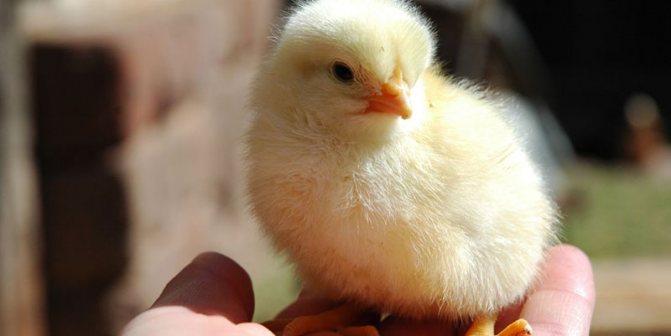

Birds are the most vulnerable category of domestic animals. They have the same thin skin as humans, and due to their smaller size, massive bedbug attacks can cause much more harm to the health of the bird. Bed bugs are a real headache for poultry farmers - infecting chicken coops, they cause a sharp decrease in egg production and even death of chickens. Suffering from bites, birds pluck out feathers, which makes them vulnerable to cold and disease. Chicken coops are usually well heated, so bugs are able to live quite comfortably in them, parasitizing poor birds. It is usually very easy to notice them - they literally stick around the bird from head to toe.
What parasites can pets carry?
On the other hand, there is a situation when the owner finds some kind of parasite on the animal, but does not know what kind of arthropod it is, and thinks that it is a bug. This is definitely not a bug. In the fur of a cat or dog, you can find a tick, flea, louse, and some of the more rare parasites. In terms of body shape, ticks are most similar to bedbugs. You can watch a separate video in which we talked about how to distinguish them. Here, fleas are most often brought into the house by cats or dogs. But neither they nor any other animals - mice, rats, birds - can tolerate bedbugs.
And finally: it's very good that you are trying to figure out how the bugs ended up in your house. If you really figure it out and find the path they took to get away from their neighbors, you can get rid of them forever and never run into them again. To do this, you need to either destroy them yourself - for this there are very good effective means - or poison them by calling the pest control service, and then eliminate the path along which they climbed into the apartment - to close up a hole or crack in the wall, insulate a window or door. Then you can be sure that you killed those bugs that were already in the house, and new ones will not get here. And the problem will be solved.
If you do not know how to properly destroy bedbugs, call us, we will tell you:
And if they still gnaw?
It so happens that the owners find their pets literally caked in insects from head to toe. Or they notice that the animal itches furiously. In this case, bugs have nothing to do with it - ticks or fleas are to blame.
- Ticks are very similar in appearance and size to bed bugs, so they are often confused. So that insidious insects do not mislead you, you need to remember that ticks have eight legs, as opposed to six bugs. In addition, if a tick sticks to the skin, then it cannot move and resembles a mole.
To remove a tick from a cat, there are special tools that can be bought at veterinary clinics or pet stores. If they are not there, then regular tweezers will do. You need to grab the tick as close to the head as possible and gently pull it out of the wound. You should not smear the tick with all sorts of substances in order to expel it - the parasite will not leave, but it will release much more bacteria and toxins into the wound. But after the tick is removed, the wound must be lubricated with alcohol.
- Some people manage to confuse bed bugs with fleas. It is very easy to distinguish them - fleas are jumpy and nimble, and their size is much smaller than that of mattress bloodsuckers.
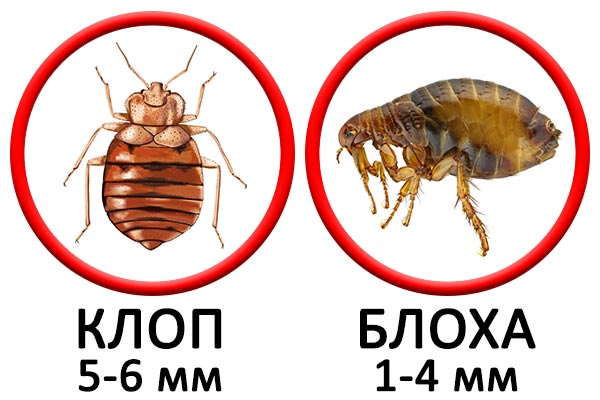

Bedbugs in chickens: how are they dangerous and how to deal with them?
Chicken bugs do not exist in nature. Chickens are bitten either by bed bugs that attack humans, or by other parasites that the bird owner may confuse with bed bugs. For example, fleas.
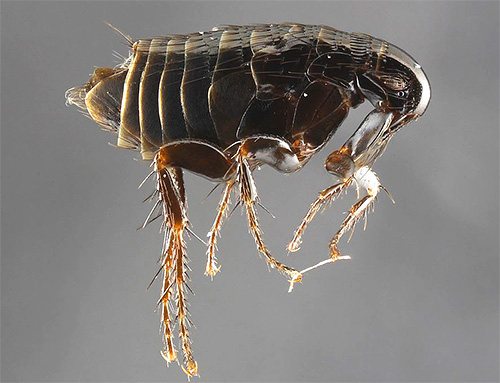

In the photo below - such "chicken bugs" stuck to the bird's eyes. In fact, this is a typical chicken flea, which differs from bedbugs in its small size and a tendency to feed in the daytime:
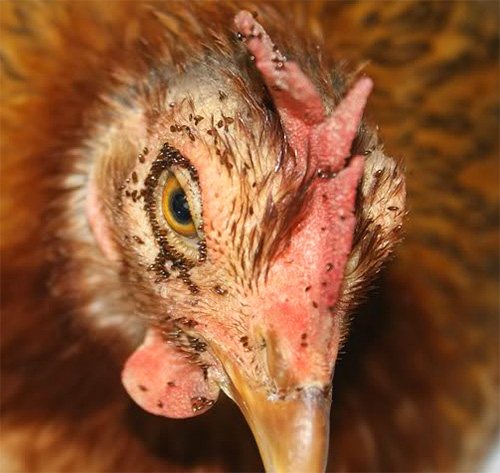

Bedbugs in chickens rarely parasitize, but if they do appear in the hen house, they quickly populate it and cause massive skin lesions in birds. The bites of bedbugs themselves greatly disturb the birds, and during mass attacks, the egg production of chickens decreases, they gain weight more slowly, and the young animals may be killed. In addition, chickens constantly pluck feathers from places where they feel itchy from bites, and as a result, decorative birds lose their presentable appearance.
In some cases, bedbugs can cause broods to leave their clutches due to constant attacks of insects, even at relatively late stages of incubation.


See also our experiments on bedbugs:
We catch bedbugs and test different agents on them - see the results ...
- We test the effect of Hector powder on bedbugs in two versions: simple processing and preparation of traps. See experiment results.
Experiment on bedbugs: at what temperature do they die and how it can be used in practiceWe put the bugs in a container that was treated with the Executioner a week ago - let's see if the parasites are poisoned with a long-dried remedy ...
- We tested Get Express on bedbugs - let's see what came of it ...
Bedbug Experiment: The Executioner Killed Them in 8 Minutes
We check the residual effect of the Executioner on the bugs (how quickly they are etched in contact with a previously treated, but already dried surface)
- Proven methods for killing bedbugs that have proven to be highly effective
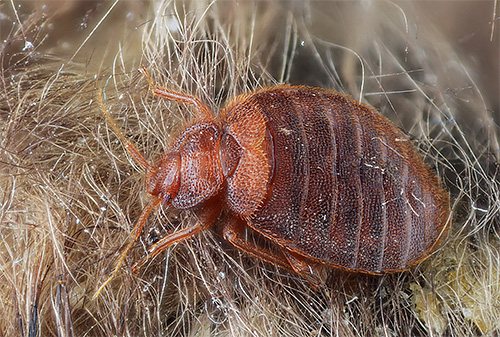

In a hen house, bugs hide in crevices and any dark narrow spaces: between cages and boards in their walls, under a layer of droppings, in perches and nests. They usually bite birds at night, but they can go hunting during the day.
It is also useful to read: Photos of bed bugs bites
And one more thing: We caught bedbugs and tested the effect of GEKTOR powder on them - it turned out to be quite a lethal thing ...
In winter, bugs normally survive temperatures up to minus 10 ° C and therefore almost always hibernate right there.
On a note
Likewise, bugs can parasitize on any poultry, from canaries to guinea fowls. Only waterfowl (ducks, geese) are well protected from them by sufficiently dense skin.
To get rid of bed bugs in chickens, the bird is removed from the chicken coop, and indoors, all surfaces are treated with Chlorophos or Karbofos in the same concentrations in which these funds are used in living quarters.


After that, a thorough cleaning is carried out: droppings and debris are taken out, all cages and perches are washed, the walls are cleaned. This treatment should be carried out twice with an interval of 10-14 days.
How to tell a bug from a flea?
A person sees, for example, a bitten cat, and does not know whether the bugs have bitten her, or fleas. Or the owner may catch an insect and not immediately understand what species it belongs to. Then he asks if the bugs of domestic animals bite, so that if they do not bite, he knows that these are not bugs.
So, in fact, the bugs of domestic animals usually do not bite, and if the animal is badly bitten, or it is bitten regularly, then the bugs are definitely not to blame. Who! This is another question. These may be fleas (most likely), there may be lice, there may be bloodsuckers or ticks. It may not even be parasites, but allergies or any infectious diseases. Here, diagnostics are already needed, perhaps from a veterinarian.
In any case, it is not difficult to distinguish a bug from a flea. Fleas are smaller, have a tall body and jump very well. Bedbugs do not jump at all. In a separate video, we talked about how to distinguish between these parasites.
But to distinguish a flea bite - cat, or dog, or rat - from a bug bite is more difficult. Bedbug bites often form chains, but fleas sometimes bite in this manner. Fleas more often bite on the legs, and bugs bite on the neck and arms. Fleas are more likely than bedbugs to bite during the day. But all these differences are not reliable. By a bite, especially a single one, it is impossible to say for sure who bit a person, a bug, or a flea. You need to look for the offender himself.


